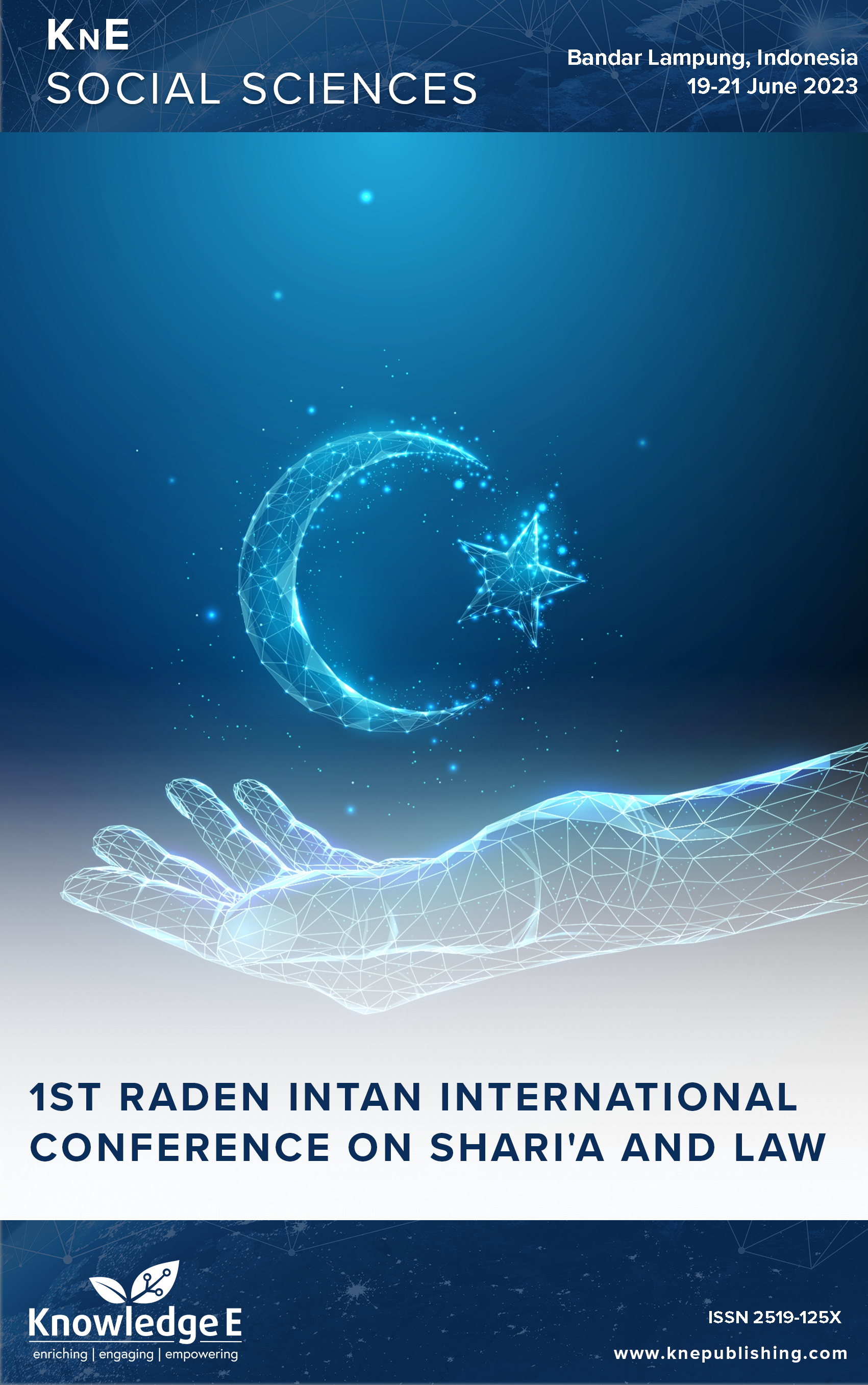Childfree Perspective Imam Syafii and Ulama Jamaah Tabligh in Bandar Lampung City
DOI:
https://doi.org/10.18502/kss.v9i2.14965Abstract
The childfree phenomenon has sparked debates in Indonesian society for its pronatalist and religious values. The act of choosing to be childfree is feared to create a crisis in future human resources. This study aims to describe the views of Imam Shafi’i and compare them with the views of scholars from the Tabligh Jamaat in the city of Bandar Lampung regarding childfree. This research adopts a qualitative comparative approach, with informants being scholars from the Tabligh Jamaat in the city of Bandar Lampung. Data were obtained through interviews. The results of the study indicate that Imam Shafi’i did not specifically discuss childfree; he linked it to the practice of ’azl as a means of preventing pregnancy. Imam Shafi’i allows individuals to not have offspring, but such an act is considered leaving behind virtues and not following the Prophet’s Sunnah. On the other hand, scholars from the Tabligh Jamaat believe that childfree is not prohibited in Islam, but Islam strongly encourages the multiplication of offspring. The existence of the Muslim community is essential for the development and expansion of Islamic da’wah. Having righteous children is the greatest investment that will eventually intercede for their parents. The common ground between the two opinions is that both allow for childfree and view it as an act that forsakes marital virtues. The difference lies in the fact that Imam Shafi’i merely considers it as leaving behind virtues and opposing human nature, while scholars from the Tabligh Jamaat perceive Muslims who choose to be childfree as incurring great loss. The act of being childfree contradicts the concept of tanâsul, which entails permanently cutting off progeny.
Keywords: Childfree, Imam Syafi’i, Ulama Jama’ah Tabligh
References
Agustina Situmorang. ‘Intertilitas Akar Pendorong Childfree Di Indonesia’, Media Indonesia ( Jakarta). n.d.
Situmorang A. Intertilitas akar Pendorong Childfree di Indonesia. Media Indones n.d.
Iyengar N. Childless or childfree. Aust J Gen Pract 2023;52:5–5. https://doi.org/10.31128/AJGP-0101-23-1234e. DOI: https://doi.org/10.31128/AJGP-12-22-6651
al Zuhaili W. Al-{Fiqhu} al-{Islamy} wa {Adillatuhu}. cet. III,. Damaskus: Dar al- Fikr; 1989.
Terj Ismail Yakub Imam Gazali. Ulumuddin: Menghidupkan Ilmu-Ilmu Agama. Medan: Percetakan Imballo; 1965.
Shofita N, Azza R, Khunaifah S, Program IS. Eduvest – Journal of Universal Studies Volume 1 Number 12 , December 2021 CHILDFREE PROBLEMS AND THEIR SOLUTIONS FROM AN Recently , there has been a childfree phenomenon that is being discussed , especially in Indonesia . It causes various questions regar 2021;1:1389–96. DOI: https://doi.org/10.59188/eduvest.v1i12.309
Mubarak JS, Kulsum EM, Darmalaksana W. Syarah Hadis Seputar Fenomena Childfree di Indonesia dengan Pendekatan Ijmali. Gunung Djati Conf Ser 2022;8:270–82.
Meidina A, Puspita M. Childfree Practices in Indonesia. Hayula Indones J Multidiscip Islam Stud 2023;7:17–32. https://doi.org/10.21009/hayula.007.01.02. DOI: https://doi.org/10.21009/hayula.007.01.02
Ibnu Mundhzir. Lisan al-Arab. 3rd ed. Dar al-Shadir; 1414.
Kuwait KW dan UI. al-Mawsu’ah al-Fiqhiyyah alKuwaitiyyah. Kementeri Wakaf Dan Urusan Islam Kuwait 1427;39:260–2.
Rachel Chrasthil. How to Be Childless. United State of Amerika: 2020.
Victoria Tunggono. Childfree & Happy. Yogyakarta: 2021.
Muhammad Abu Zahrah. Ushul Fiqih, Terj. Saefullah Ma“shum Dkk., cet. XI. Jakarta: Pusaka Firdaus; 2008.
Fairuzzabadi. al-Mudzdab. Mesir: Zahana; 66AD.
Imam Ghazali. Ihya Ulumuddin, Menghidupkan Ilmu-Ilmu Agama, Terjemahan. Medan: Percetakan Imballo; 1965.
Samsi I. Childfree. n.d.
Rizal M. No Title n.d.:10 Mei 2023. DOI: https://doi.org/10.26858/ja.v10i1.45738
Qurrah A’yuniyyah. ‘Memperoleh Keturunan Sebagai Tujuan Menikah Dalam Al- Qur’an : Pendekatan Tafsīr Maqāṣidī.’ Universitas Islam Negeri Walisongo Semarang: 2022.
Ridwan U. Childfree. n.d.
Khadher Ahmada, Mohd Farhan and MA. ‘Analisis Status Hadith Syafaat Huffaz Al- Quran Kepada 10 Ahli Keluarga.’ Online J Res Islam Stud 2019;6:61–72. DOI: https://doi.org/10.22452/ris.vol6no1.5

